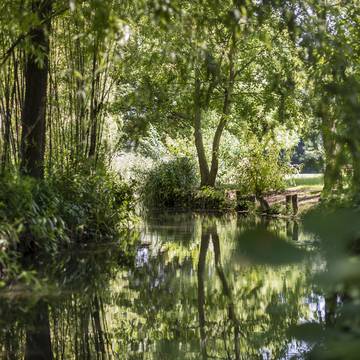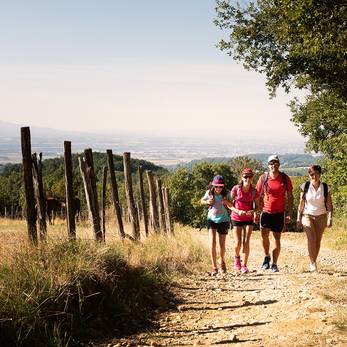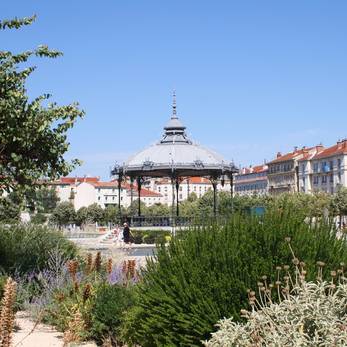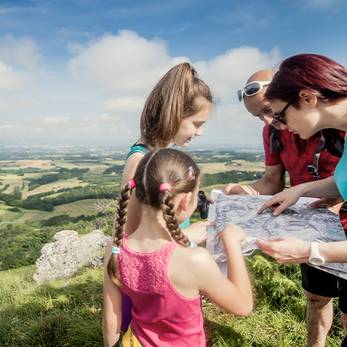The canals of Valence are not always visible and are not particularly well known. However, they wind through the town and provide a welcome breath of fresh air and superb natural setting. A refreshing and peaceful way to explore the town in complete safety.

The history of the canals of Valence
The name "Valence" didn't come from nowhere. It actually means "populated place full of water" in the Celtic language. With a water network stretching 40 km, including secondary networks, and 17 km of main open-air canals, they bear witness to the past of Valentia and provide 10 hectares of green spaces to the town.
The canals have always played a key role for the town and very early on, they helped bring economic trade to Valence. They were used by the Romans and then by the monastic orders who owned the land at that time. In the Middle Ages, they were used to help turn the wheels of the windmills, and in the 19th century, some industries were established there.
The stagnant and polluted waters of the canals brought about the worry that diseases might spread. Some of them were covered over or drained.
In the 60s, the canals were finally recognised and footpaths and promenades were created around them, to preserve the natural and biological wealth of this heritage site.
Malcontents canal was the first section to be developed in 1980. Others then followed over the years: "Charran", "Moulins", "Thon", "Malcontents", "Marquise", "Flavie", "Saint-Estève", "Robine", "Îles" and "Épervière".
The canals of Valence: a cultural and natural heritage site
The canals are ideal for a walk that will take you both through the natural environment and on a discovery of the town, but that is not all! We can see some traces from the past and can also discover numerous plant and animal species there.
Along your way, you'll see the ruins of ancient wash-houses and various water constructions such as overpasses (some of them recent following the rebuilding of ancient culverts), fountains and even a water wheel from an ancient windmill.
The whole of the canal network is known as a "green and blue belt", by the "Grenelle Environnement" initiative. These green and blue belts are used to preserve and restore ecological continuity in urban development projects.
The blue aspect represents the aquatic plants and the green represents trees, bushes and herbaceous plants.
With a bit of patience and very good eyesight, you may catch a glimpse of several species such as brown trout, dragonflies, midwife toads and palmate newts.
This is a superb natural heritage site in the town centre, with incredible biodiversity that must be preserved.
The right to pass through the canals
Some of the banks are privately-owned and so pedestrians are not allowed access. Local owners are under the obligation to monitor the natural environment around the banks.
A part of the banks that are open to the general public is owned by the town council and the rest of the area is privately-owned but the owners allow pedestrians to access the banks.
A pleasant family-friendly, accessible walk
Going for a walk along the canals is a fantastic way to have a very pleasant and peaceful outing. Even if a part of the footpath is covered in asphalt, it is still a complete change of scenery. A very enjoyable walk, to relax and unwind while admiring other nearby monuments. You could walk along this path and take a detour to the Place des Clercs. From there, you can admire the magnificent Saint-Apollinaire cathedral and the remarkable architecture of the Maison des Têtes just a stone's throw from the square.
The walk is a very easy one to do and suitable for families with children, even if you have a pushchair with you.
There are 2 possible loops:
- The Epervière canals
- The Châteauvert canals
Both of these walks take around 1.5 hours.
DOWNLOAD THE MAP OF THE CANALS
Guided tours of the canals
You can also choose to take part in a guided tour, to find out more about the history of the canals and the wildlife found there. They are organised by the Heritage department, Pays d’Art et d’Histoire or the les canaux de Valence : biodiversité au fil de l’eau association.
Group tours of the canals are organised by the tourist office, call +33 (0)4 75 44 90 42



